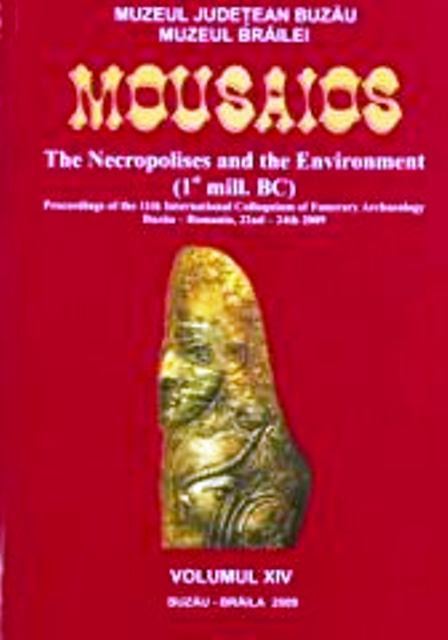Le rapport e’emplacement spatial entre les lieux d’habitat et ceux des necropoles chez les thraces du Ier mil. AV.J.- C.
E'emplacement of spatial relationship between the locations of habitat and necropolis in the Thracian world of the I mil. BC
Author(s): Ion Niculiţă, Tudor ArnăutSubject(s): Archaeology
Published by: Muzeul Judetean Buzău
Keywords: settlements; necropolises; Northern Thracians; inventory;
Summary/Abstract: A lot of recent published synthesis circulates in the scientific domain more than a thousand monuments from the East Carpathians which, certainly, can be situated in the 1st millennium B.C. This makes possible a complex investigation of the North Thracian’s habitat, which opens a lot of problematical questions, from different points of view, about the comparative topography of the digs (sites). The investigation checked progress in series domains like the civic space or economical structure. Our intercession’s topic will be the spatial organizing and the proportion between the habitable space (of the livings) and the location and the rank space of the dying, of necropolises. The systematical diggings with a travelling character offered the possibility to register more than 96 sepulchral monuments which are distributed, from the cultural chronological point of view, in: 26 purposes from early Ha; 9 objects from the middle Ha; 33 necropolis and isolated findings which are from Ha D, and more than 30 funeral Monuments from the 5th century B.C. – 3rd century B.C. The topographical remarks and the spatial Location analyses of some scrupulous examined monuments offered the possibility to analyze the correlation between the placements from Saharna “La Revichin”, Saharna “Hulboaca” and the necropolis which were discovered at 100-120 m NW, and at the distance of 500-600 m SE. At 1,2 km distance, in the NW direction from the early Hallastatt location, were discovered funeral complexes from Hansca “La Matcă”. Such correlations for the middle Ha can be done trough the monuments from Şoldăneşti, Selişte and Orlovca. The funeral necropolis Trinca „Drumul Feteştilor” from Ha D. belongs to the population from the „Izvorul lui Luca” centre, which has several levels of living. Such examples, for the end of the 5th century B.C. – 3rd century B.C., are the situations noted at Hansca, where in the “Lutărie” center were discovered 82 tombs of the population from „Limbari Căprărie” location, situated at the distance of 1,5 km to SE. A similar situation we ascertained at Măşcăuţi (Orhei district, Republic of Moldova), at Speia (Grigoriopol district, Republic of Moldova) or at Pădureni (Vaslui county, România) near which where discovered the necropolis.
Journal: Mousaios
- Issue Year: 2009
- Issue No: 14
- Page Range: 121-138
- Page Count: 18
- Language: French

